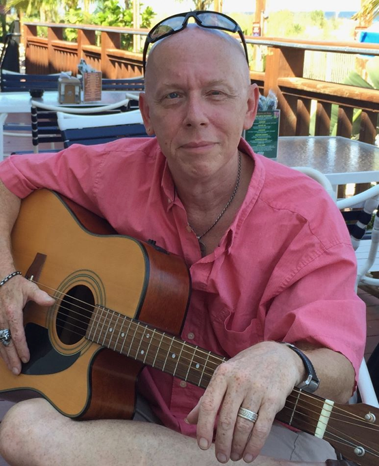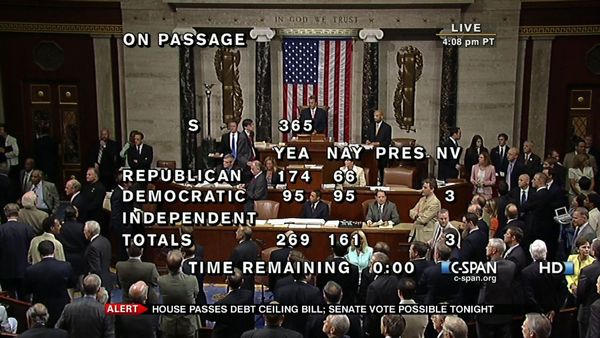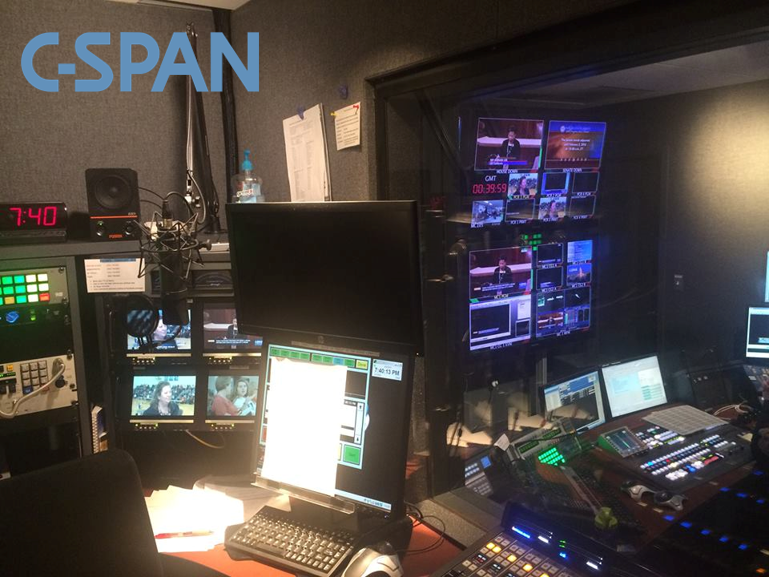I’ve known Greg St. James for most of my career in radio. He comes from a long line of Detroit rock radio personalities. A native Detroiter, Greg has worked for several rock and AOR stations in Detroit, as well as co-founding 89X (CIMX) – still on the air in the Alternative format. Greg also helped us launch the Edge format during the days when we were trying to figure it all out.
In 2003, his career took a different path. Greg moved to Washington, D.C., and became a voice talent for C-SPAN TV. And that’s what got my attention. While speaking with him last month about how broadcast radio has evolved, I was taken by some of Greg’s observations about how C-SPAN approaches its audience and how that applies to what many of us are doing in both commercial and public radio settings.
C-SPAN is a unique entity that you’ve likely seen and perhaps actively watch, but probably know very little about. Formed in 1979 by the cable TV industry as a public service, it is funded by a 6¢ per subscriber fee. Unique to the media industry, C-SPAN is private, non-profit, and commercial-free. It is best-known for its gavel-to-gavel coverage of Congress, as well as international proceedings and other policy events.
C-SPAN is like watching our government, minus the pundits, talking heads, bias, and “fake news.” At a time when it’s often difficult to distinguish the truth from everything else, C-SPAN lets you see it (and hear it) for yourself, and make your own judgments. Greg’s view from inside this unique perch is valuable to all of us in the radio business.
Greg was kind enough to write today’s “Guest List” feature, and it’s a good one.
The 5 Things I’ve Learned About Radio from Working at C-SPAN
1. It’s Not About YOU
In the 13 years I have been at C-SPAN, I have never used my name on-air. Jon Stewart once referred to me as “The disembodied voice of C-SPAN” (yes, I put that on my resume).
The listener is the focus of broadcasting. Not me, and not you. After many years of saying my name immediately after the call letters in every break, it was eye opening to learn that when I get out of the way, the User Experience improves. The takeaway lesson is this: let the listener connect with the brand and the content through you, not connect with YOU via the brand and content. Become the embodiment of the brand and you will both succeed.

2. Broadcasting is an Ongoing Conversation with One Listener
At C-SPAN. we’ve been having a conversation with our audience since 1979.
Every point of contact with each listener is part of an ongoing conversation he or she is having with your station. Every chance to connect is an opportunity to build loyalty and invite more participation with your content and platforms. The conversation picks up where the listener left off each time, so as they say in sales: “Always be closing”. Always invite the listener to keep the conversation going.
3. Be Honest
C-SPAN has taught me a lot about the importance of honesty throughout a broadcast brand. I’ve heard (and told) most of the jokes about how boring C-SPAN is, but one thing no one laughs about is the integrity of our company. We are who we are, we never use jive, we never hype our products, and we respect the viewer’s intelligence.
The audience can tell when you are lying.

4. Keep the Listener In-House
At C-SPAN, we have a huge amount of archived content, tons of online-only content, a mobile app, three TV networks and a radio station. We constantly remind our viewers and listeners they can see more, hear more, learn more anytime they wish to online. If they missed part of an event, it’s available online right now and anytime.
Keep the customer in the store as long as you can!

5. Words Matter
We are in the word business. The words we choose, the way we write, how we tell our story. Tell the story well. At C-SPAN, I have run a writers workshop project working with long-time pros and new hires to polish our writing skills. Words can move nations, win hearts, or lose listeners.
Take the time to write well!
Bonus Tip: Love It or Leave It
I’ve been on the air one way or another since I was 16. When I first got to Washington, I had some moments when I asked myself what a rock n’ roll kid from Detroit was doing on Capitol Hill. Then the on-air light went on, and the bulb in my head flashed, and I remembered I still LOVE being a broadcaster. If you don’t feel that way EVERY DAY, then do something else. Maybe run for Congress!
More Guest Lists
- David Oxenford: 5 Things Broadcasters Should Know About Music Royalties
- Jim Cutler: 5 Tips To Help Radio Turn Empty Imaging into Solid Content
- Matthew Lasar: 6 Pivotal Moments in the Internet Radio Era
- 5 Ways Radio Broadcasting is Different From Podcasting (From a Podcaster Turned DJ)
- 5 Ways On-Air Personalities Can Extend Their Brands Beyond Radio
- Media And Technology In 2025: Believe It Or Not! - April 18, 2025
- In Radio, You Just Never Know - April 17, 2025
- The Secret To Making A Great Podcast (And Great Radio) - April 16, 2025





Outstanding! With admiration from Boston.
Many thanks, Clark.
One of the most succinct, practical and helpful pieces about how we can improve our service to our audiences – or as I prefer to say – our constituents, as they are part of that greater and interdependent whole that comprises why we’re in the business we’ve chosen.
Thank-you, sir, you are a blessing! Now, if we can get our sales side to recognize that it’s NOT about our air time/ratings/readers and NOT about our “me too” digital offerings, but ALL about (and so easily done, that I am amazed others do not) generating documented and attributable 52 weeks of sales results for each of the 52 weeks we contract our advertisers. That’s when radio will rise above its flat-lining revenue performance and take its rightful position of dominance in catalyzing, leading and following the consumer from pre-need to purchase.
Andy, many thanks for the kind, poignant, and insightful comments. Clearly, the onus is on sales to reach marketers and advertisers with the message that radio is about connections – with listeners and the community. Thanks to C-SPAN’s Greg St. James for giving me the day off, and providing us with some great lessons.